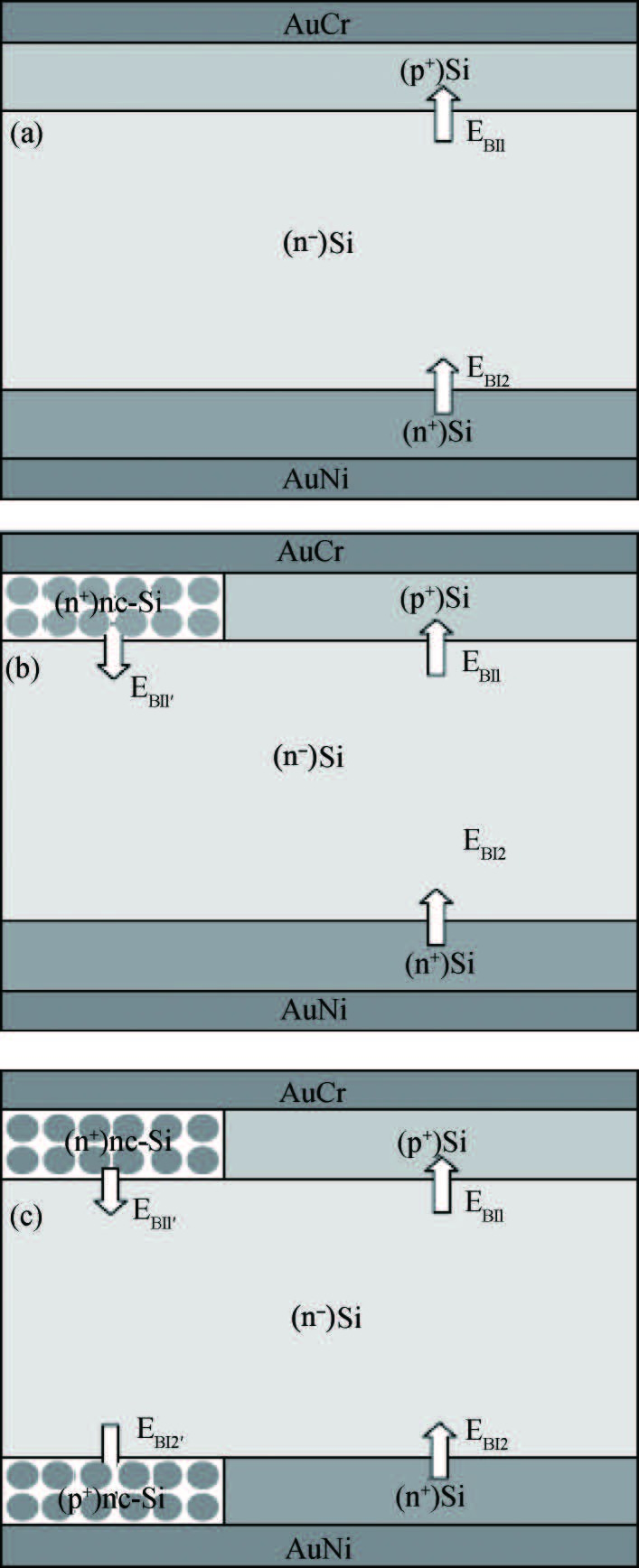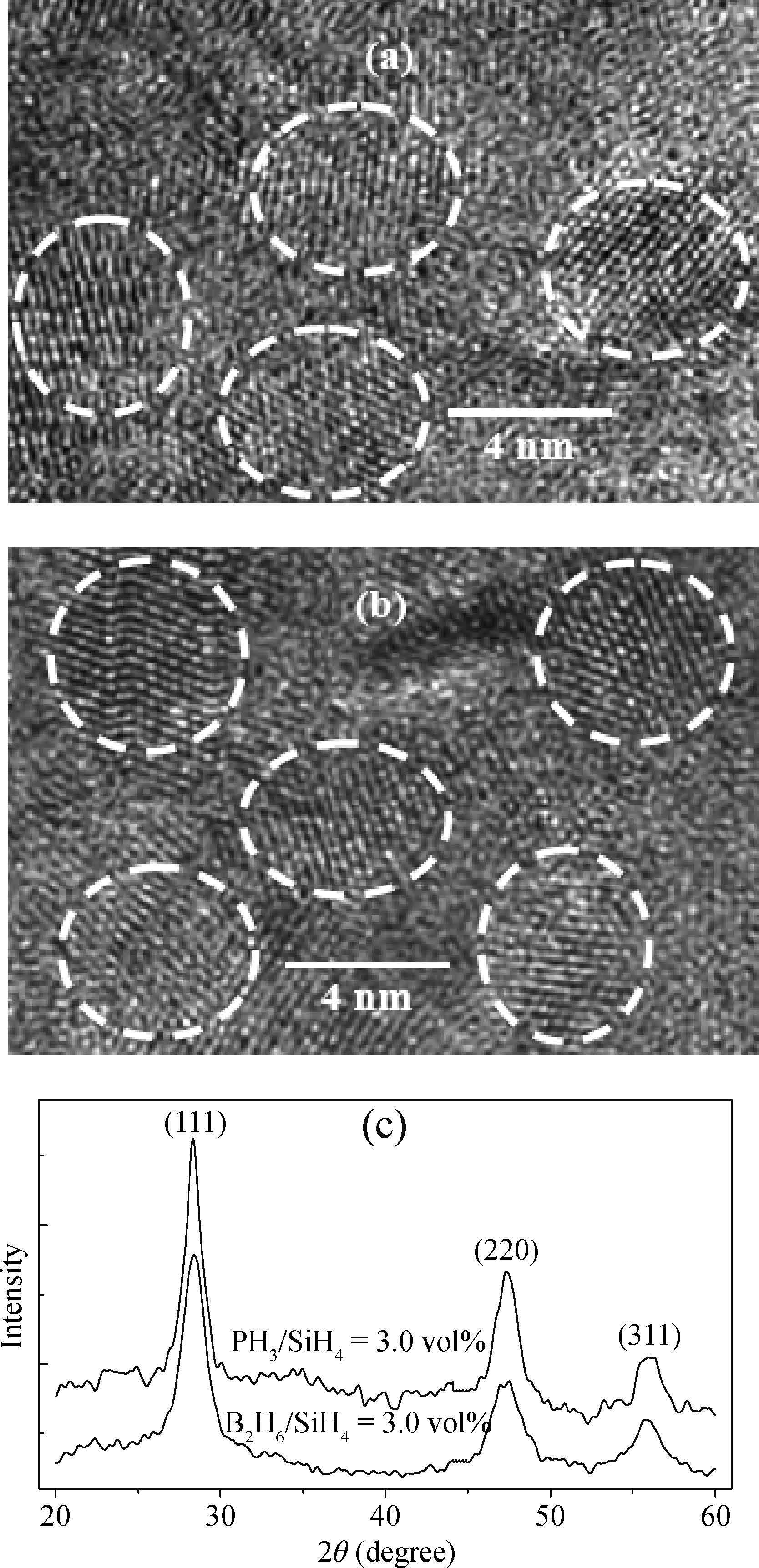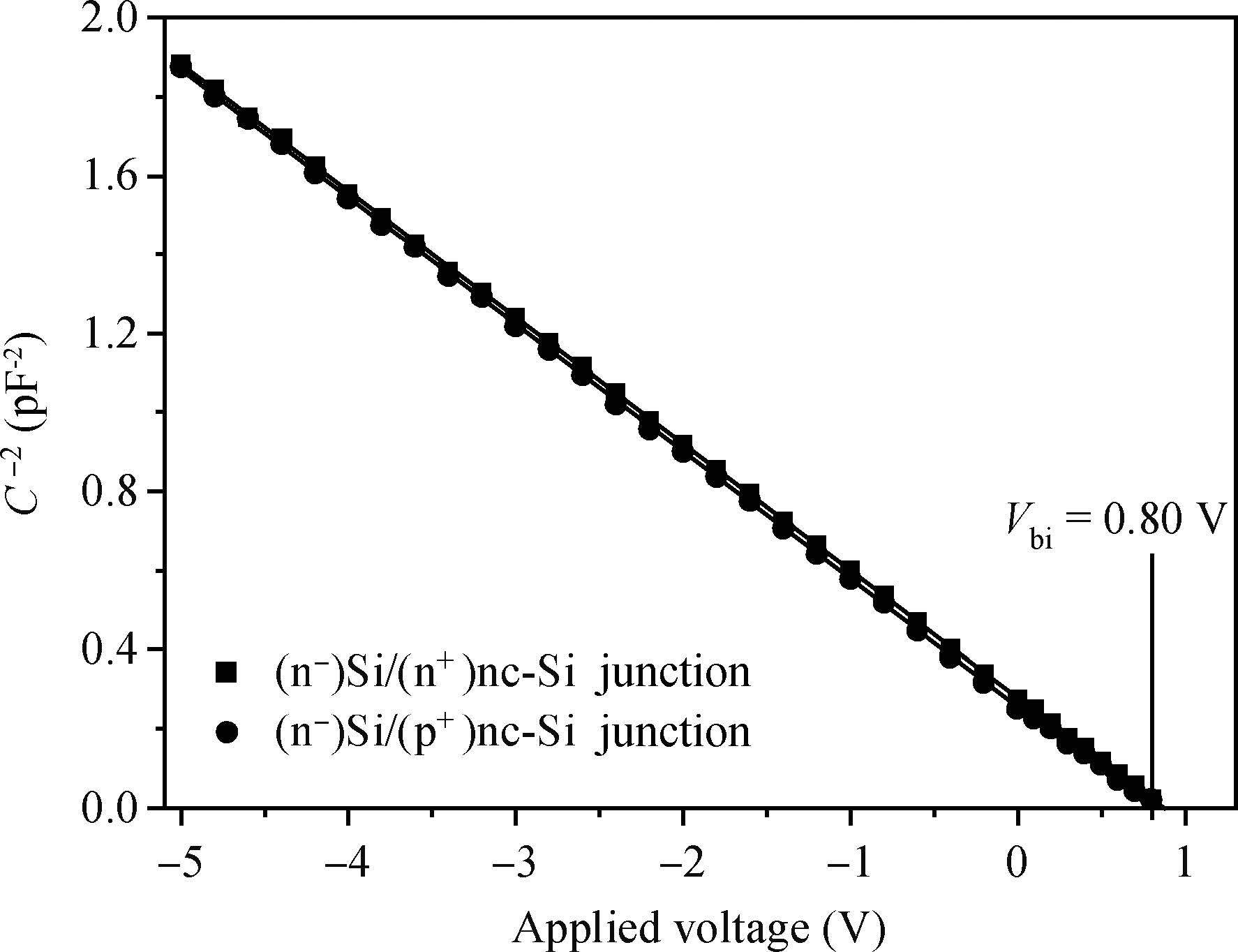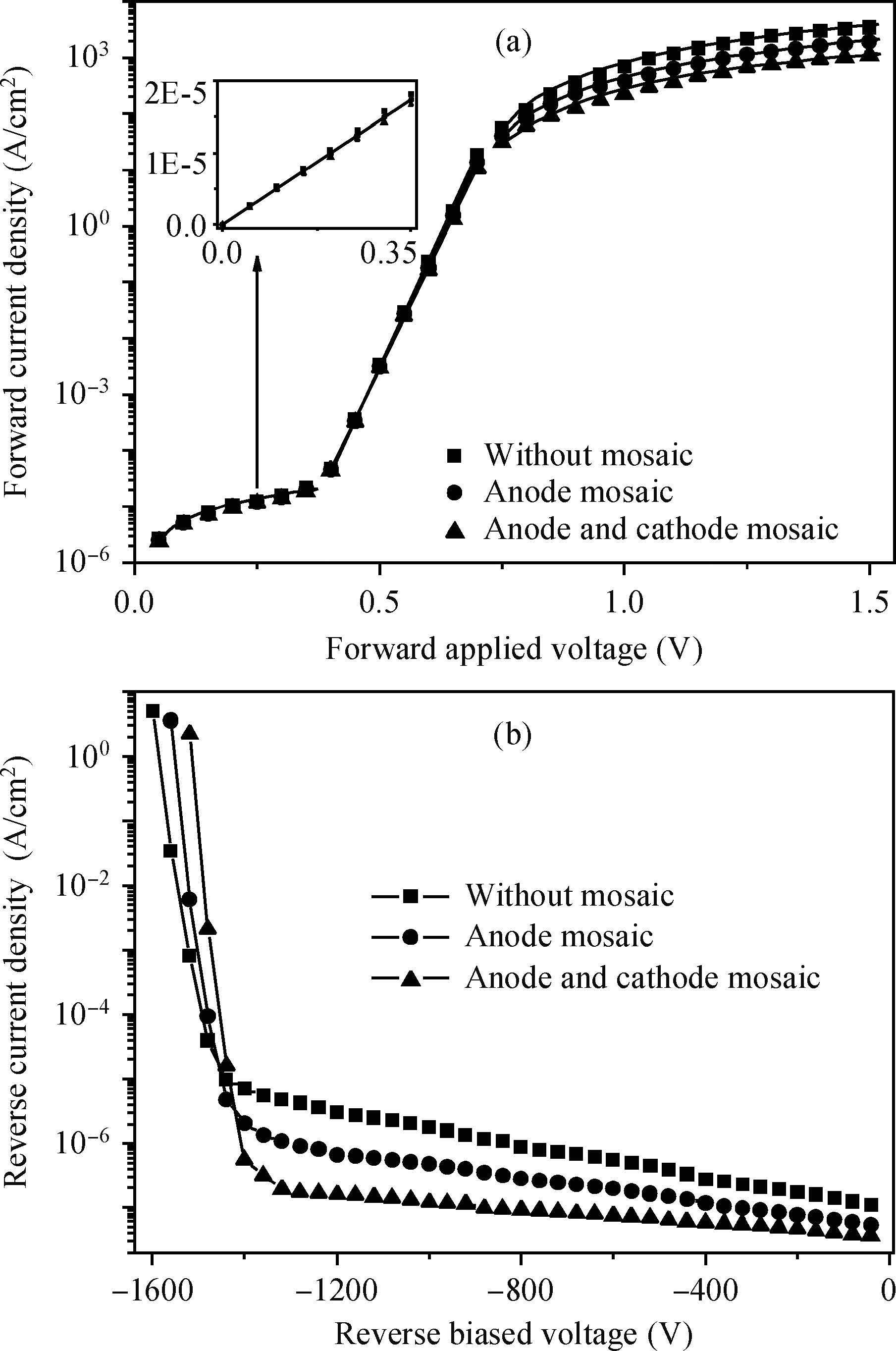| Citation: |
Wensheng Wei, Chunxi Zhang. p+-n--n+-type power diode with crystalline/nanocrystalline Si mosaic electrodes[J]. Journal of Semiconductors, 2016, 37(6): 064007. doi: 10.1088/1674-4926/37/6/064007
****
W S Wei, C X Zhang. p+-n--n+-type power diode with crystalline/nanocrystalline Si mosaic electrodes[J]. J. Semicond., 2016, 37(6): 064007. doi: 10.1088/1674-4926/37/6/064007.
|
p+-n--n+-type power diode with crystalline/nanocrystalline Si mosaic electrodes
DOI: 10.1088/1674-4926/37/6/064007
More Information
-
Abstract
Using p+-type crystalline Si with n+-type nanocrystalline Si (nc-Si) and n+-type crystalline Si with p+-type nc-Si mosaic structures as electrodes, a type of power diode was prepared with epitaxial technique and plasma-enhanced chemical vapor deposition (PECVD) method. Firstly, the basic p+-n--n+-type Si diode was fabricated by epitaxially growing p+- and n+-type layers on two sides of a lightly doped n--type Si wafer respectively. Secondly, heavily phosphorus-doped Si film was deposited with PECVD on the lithography mask etched p+-type Si side of the basic device to form a component with mosaic anode. Thirdly, heavily boron-doped Si film was deposited on the etched n+-type Si side of the second device to form a diode with mosaic anode and mosaic cathode. The images of high resolution transmission electronic microscope and patterns of X-ray diffraction reveal nanocrystallization in the phosphorus- and boron-deposited films. Electrical measurements such as capacitance-voltage relation, current-voltage feature and reverse recovery waveform were carried out to clarify the performance of prepared devices. The important roles of (n-)Si/(p+)nc-Si and (n-)Si/(n+)nc-Si junctions in the static and dynamic conduction processes in operating diodes were investigated. The performance of mosaic devices was compared to that of a basic one.-
Keywords:
- Si power diode,
- nanocrystalline Si,
- mosaic electrode,
- reverse recovery
-
References
[1] Amemiya Y, Suget T, Mizushima Y. Novel low loss and high speed diode utilizing an "ideal" ohmic contact. IEEE Trans Electron Devices, 1982, 29(2):236[2] Jayant B B. Analysis of a high voltage merged p-i-n/Schottky (MPS) rectifier. IEEE Electron Device Lett, 1987, EDL-8(9):407[3] Wang Ying, Yu Chenghao, Miao Zhikun, et al. Low leakage 4H-SiC junction barrier Schottky rectifier with sandwich p type well. IET Power Electron, 2015, 8(5):672[4] Ma Li, Gao Yong. A novel SiGe/Si heterojunction power diode utilizing an ideal ohmic contact. The Fourth International Workshop on Junction Technology (IWJT' 2004), 2004:263[5] Murray A F J, Kelleher A, Lane W A. On the use of a p+/n+ mosaic contact for fast switching diode applications. The Sixth International Conference on Power Electronics and Variable Speed Drives, Nottingham, UK, 1996:247[6] Aldrete V H E, Santana J, del Valle J L. Stored charge control of p-i-n diodes:a simulation approach. Fourth IEEE International Caracas Conference on Devices, Circuits and Systems, Oranjestad, Aruba, Dutch Caribbean, 2002:D021-1-8[7] Aldrete V H E, del Valle J L, Santana C J. A TCAD comparative study of power rectifiers-modified p-i-n vs. modified mosaic contact p-i-n diode. Microelectron Reliab, 2003, 43(1):181[8] Wu He, Wu Yu, Kang Baowei, et al. Simulation of power fast recovery diodes using local lifetime controlling technique. Chinese Journal of Semiconductors, 2003, 24(5):520[9] Humbel O, Galster N, Dalibor T, et al. Why is plasma engineering in fast recovery diodes by ion irradiation superior to emitter efficiency reduction. IEEE Trans Power Electron, 2003, 18(1):23[10] Wei Wensheng. Detection of carrier information in heterojunctions of nanocrystalline/crystalline Si. Solid State Sciences, 2010, 12(5):789[11] Chen X Y, Shen W Z. Observation of low-dimensional state tunneling in nanocrystalline silicon/crystalline silicon heterostructures. Appl Phys Lett, 2004, 85(5):287[12] Wei Wensheng, Zhao Ningning, Wang Tianmin. Conduction behavior of hydrogenated nanocrystalline silicon backward diode. Nanotechnology, 2006, 18(12):025203[13] Wei Wensheng, Wang Tianmin, Zhang Chunxi, et al. Variable capacitance diodes of (p)nc-Si:H/(n)c-Si heterojunction. Chinese Journal of Semiconductors, 2005, 26(4):745[14] Wei Wensheng, Yan Xunlei. Structural characterization of boron doped hydrogenated nanocrystalline silicon films. Vacuum, 2009, 83(5):787[15] Wei Wensheng, Luo Fei, Zhang Chunxi, et al. Detection of reverse recovery characteristics of power diodes. IET Power Electronics, 2016, 9(3):476[16] Arpatzanis N, Tassis D, Dimitriadis C A, et al. Experimental investigation of noise in 4H-SiC p+-n-n+ junctions. Semicond Sci Technol, 2006, 21(3):591[17] Domeij M, Lutz J, Silber D. On the destruction limit of Si power diodes during reverse recovery with dynamic avalanche. IEEE Trans Electron Devices, 2003, 50(2):486[18] Pendharkar S P, Trivedi M, Shenai K. Dynamics of reverse recovery of high power p-i-n diodes. IEEE Trans Electron Devices, 1996, 43(1):142 -
Proportional views






 DownLoad:
DownLoad:


















